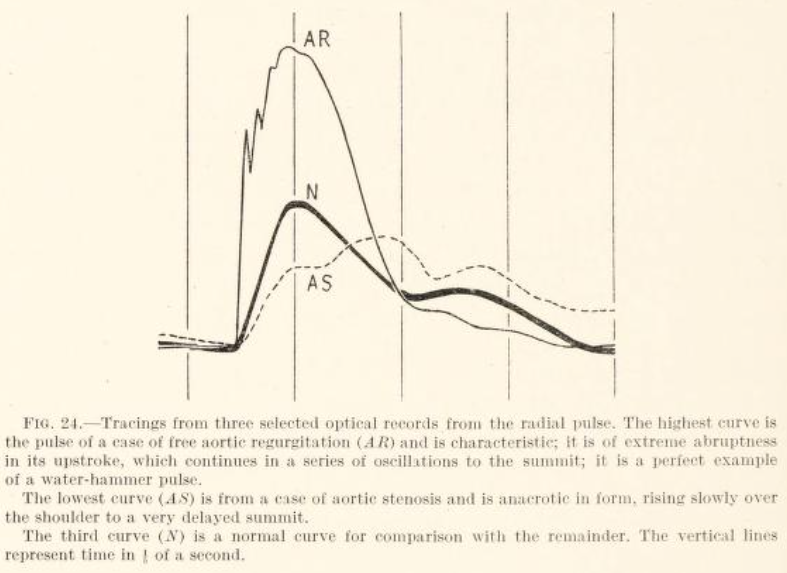President Abraham Lincoln’s Aortic Valve
Aortic Disease is called a silent killer because there are often no warning signs
#
Introduction
The events of Sunday, November 8, 1963, were not meant to go down in medical history.
The Gettysburg Address was delivered by President Abraham Lincoln ten days later.
Nevertheless, a relatively standard photograph of President Abraham Lincoln taken on November 8, 1963, may hold a clue about his heart valve.
Additionally, medical experts would later name a diagnostic physical exam finding after him based on what they observed in that photograph.
Here is the photo.

If you look closely at his left foot, it appears blurry.
His left foot may have been uncontrollably “dancing” during the photo shoot because of excessive arterial pulsation transmitted through his popliteal artery behind his left knee while crossed over his right leg.
The movement of his foot during the taking of the photograph is thought to have created the blurry image of his left foot.
Lincoln’s Sign for diagnosing aortic valve insufficiency, also referred to as aortic regurgitation, is the presence of a pulsing foot in someone with their legs crossed. (An alternative name is the Lincoln-Brooks sign of aortic insufficiency.)
[Note: For a refresher on the aortic valve anatomy, check out our Atlas of Aortic Anatomy HERE]
The prominent pulsing phenomenon is a result of insufficiency of the aortic valve, causing a prominent pulse-wave of aortic incompetence.

It is purely hypothetical that President Lincoln had aortic insufficiency. One medical expert, Dr. Harold Schwartz, speculates that President Lincoln may have Marfan’s Syndrome based on the blurry foot on the photograph.
Regurgitation of the Aortic Valve
There are four valves in the heart. Two on the left side of the heart (aortic and mitral valves) and two on the right side of the heart (tricuspid and pulmonic valves).
The aortic valve is the main heart valve and can degenerate in several ways.
The aortic valve can become excessively calcified, leading to aortic stenosis (a narrowing of the opening of the aortic valve leaflets).
The aortic valve can become “leaky” due to poor coaptation of the aortic valve leaflets. When the leaflets don’t come together perfectly, blood can leak back into the heart instead of moving forward towards the body.
Aortic Valve Insufficiency: Causes, Symptoms, and Treatment
What is aortic valve insufficiency? Aortic valve insufficiency, also called regurgitation, occurs when the heart’s aortic valve no longer closes properly, resulting in blood leaking back into the heart. This not only causes shortness of breath but can also lead to heart failure and even death if it’s left untreated.
Read on to learn about the causes of aortic valve insufficiency, treatment options, and recovery timeframes. This will help you better understand this condition and know what to expect from your doctor.
What is aortic valve insufficiency?
Aortic valve insufficiency is a progressive and debilitating heart condition that occurs when the aortic valve doesn’t close tightly enough to prevent blood from flowing backward. Aortic insufficiency affects millions of people each year and causes the heart to work harder than it should. Although there are many symptoms associated with aortic insufficiency, the most common one is shortness of breath.
Fortunately for those affected by this condition, treatments available can ease symptoms and improve their quality of life. Doctors may prescribe medication or suggest certain lifestyle changes to help manage aortic valve insufficiency. However, surgery is the most effective way to manage severe aortic valve insufficiency. Doctors may perform two types of surgery on patients who have developed severe cases of aortic valve regurgitation: aortic valve replacement or aortic valve repair.
What causes aortic valve insufficiency?
Heart valve conditions can be due to a variety of causes. Aortic valve insufficiency is caused by the weakening of the aortic valve and can lead to aortic regurgitation. This condition occurs when blood flows back into the heart from the body instead of flowing out of the heart through the aorta. If untreated, it can lead to weakening in other parts of your heart.
You may also experience symptoms such as chest pain or trouble breathing (shortness of breath). The earlier this condition is detected and treated, the more successful the treatment will be for patients. Early detection may save someone’s life. This is because most people with aortic valve insufficiency can die suddenly from a heart attack or stroke before they know they have any problem.
Another contributing factor to aortic valve insufficiency is an enlargement of the aortic root. An aortic root aneurysm can alter the geometry of the aortic annulus and create misalignment of the aortic valve leaflets.
Patients with aortic valve insufficiency should be screened for an aortic root aneurysm with an echocardiogram.
Furthermore, an aortic root aneurysm can be a problem in its own right. An aneurysm of the aortic root and ascending aorta can put someone at risk of developing an aortic dissection.
How is aortic valve regurgitation diagnosed?
A diagnosis of aortic valve regurgitation can be difficult because there are a number of other things that can cause similar symptoms. A doctor will take your medical history, do an examination, and order tests to assess the function of your heart valves. If they suspect you have aortic regurgitation, they will then perform an echocardiogram or cardiac catheterization to evaluate the size of the heart valve opening.
How do doctors treat aortic valve insufficiency?
Doctors diagnose aortic valve insufficiency with a physical exam. If there’s suspicion of aortic regurgitation, doctors may order an echocardiogram to examine the heart for any leaking or ruptured valves. Once diagnosed, doctors treat aortic valve insufficiency with lifestyle changes like getting regular exercise and maintaining a healthy diet.
They also prescribe medication to manage high blood pressure.
In severe cases, surgery may be needed to correct the valve problem by replacing it with an artificial one. Using advanced techniques, it is possible in certain circumstances to repair the aortic valve.
Important Takeaways
- The aortic valve is a one-way valve that regulates blood flow from the left ventricle of the heart to both the left atrium of the heart and to the rest of the body.
- Symptoms of aortic valve insufficiency include chest pain or trouble breathing (shortness of breath)
- If there’s suspicion of aortic regurgitation, doctors may order an echocardiogram to examine the heart for any leaking or ruptured valves.
- Once diagnosed, doctors treat aortic valve insufficiency with medication to manage high blood pressure.
- When the aortic valve insufficiency becomes severe, the aortic valve can be replaced or repaired.
References
- https://archive.org/details/lincolninphotogr00hami/page/146/mode/2up
- Lewis T. Aortic Regurgitation. In: Diseases of the heart, 1933: 120-126
- Schwartz H. Abraham Lincoln and the Marfan syndrome. JAMA 1964; 187:473–479.
- McKusick VA. Abraham Lincoln and Marfan syndrome. Nature 1991:352:280.
- Schwartz H. Abraham Lincoln and aortic insufficiency. The declining health of the President. Calif Med. 1972 May;116(5):82-4. PMID: 4565398; PMCID: PMC1518411.
#
Pass this along: you could save someone’s life
Feel free to pass this information along to friends and family members so that we can all work together to prevent unexpected deaths resulting from undiagnosed aortic diseases.
#
Stay Educated
Sign up for my weekly newsletterto stay educated about new developments in aortic disease.
Take a deep dive into learning more about aortic dissections and get your copy of my book BadAorta Volume One: A Deep Dive into Understanding Aortic Disease, It’s Treatments, and The Latest Research.

Get your copy today of BadAorta Volume One: A Deep Dive into Understanding Aortic Disease, It’s Treatments, and the Latest Research
Was this post informative?
Subscribe to my newsletter to learn more about the aorta, its diseases, and how to treat them.
Comments
Share your thoughts below — I try to get back to as many comments as possible.